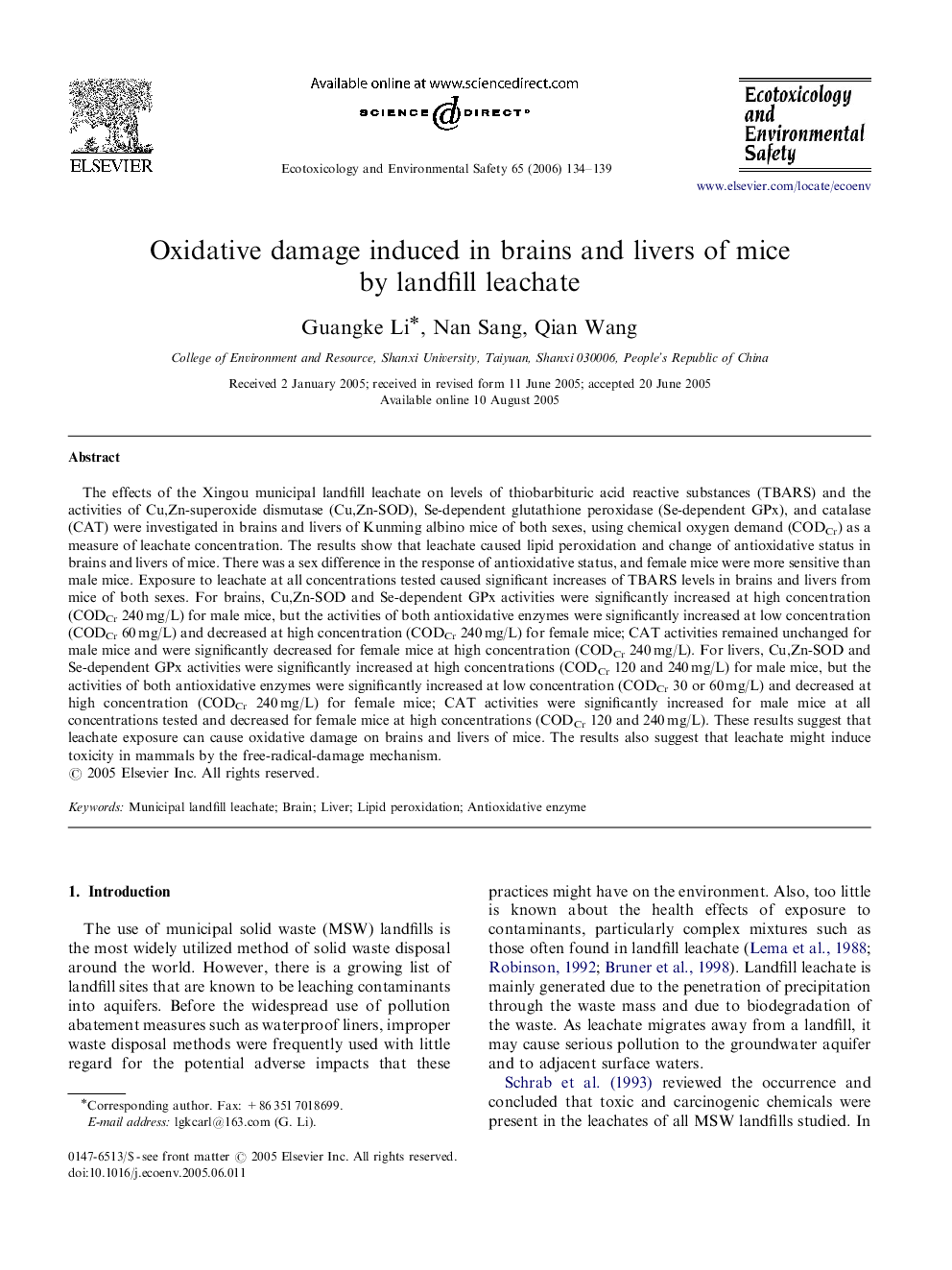| Article ID | Journal | Published Year | Pages | File Type |
|---|---|---|---|---|
| 4422333 | Ecotoxicology and Environmental Safety | 2006 | 6 Pages |
The effects of the Xingou municipal landfill leachate on levels of thiobarbituric acid reactive substances (TBARS) and the activities of Cu,Zn-superoxide dismutase (Cu,Zn-SOD), Se-dependent glutathione peroxidase (Se-dependent GPx), and catalase (CAT) were investigated in brains and livers of Kunming albino mice of both sexes, using chemical oxygen demand (CODCr) as a measure of leachate concentration. The results show that leachate caused lipid peroxidation and change of antioxidative status in brains and livers of mice. There was a sex difference in the response of antioxidative status, and female mice were more sensitive than male mice. Exposure to leachate at all concentrations tested caused significant increases of TBARS levels in brains and livers from mice of both sexes. For brains, Cu,Zn-SOD and Se-dependent GPx activities were significantly increased at high concentration (CODCr 240 mg/L) for male mice, but the activities of both antioxidative enzymes were significantly increased at low concentration (CODCr 60 mg/L) and decreased at high concentration (CODCr 240 mg/L) for female mice; CAT activities remained unchanged for male mice and were significantly decreased for female mice at high concentration (CODCr 240 mg/L). For livers, Cu,Zn-SOD and Se-dependent GPx activities were significantly increased at high concentrations (CODCr 120 and 240 mg/L) for male mice, but the activities of both antioxidative enzymes were significantly increased at low concentration (CODCr 30 or 60 mg/L) and decreased at high concentration (CODCr 240 mg/L) for female mice; CAT activities were significantly increased for male mice at all concentrations tested and decreased for female mice at high concentrations (CODCr 120 and 240 mg/L). These results suggest that leachate exposure can cause oxidative damage on brains and livers of mice. The results also suggest that leachate might induce toxicity in mammals by the free-radical-damage mechanism.
